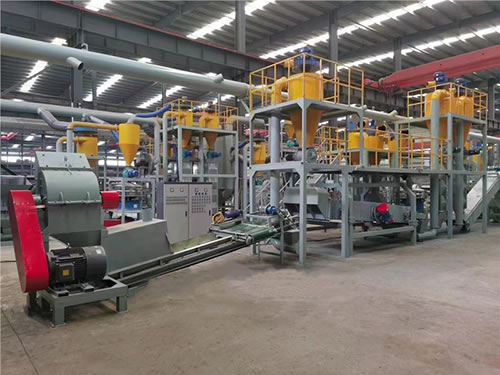High-Quality Henan Brand Lithium Battery Crushing and Recycling Equipment Assists Thailand's Power Battery Recycling Industry to Move Forward
Thailand, located in the central part of Southeast Asia, is a country with diverse geography and rich history. Geographically, it is bordered by Myanmar to the northwest, Laos to the northeast, Cambodia to the southeast, and Malaysia to the south. The terrain of Thailand features highlands in the north and lowlands in the south, with the Chao Phraya River flowing through the central region.
Historically, Thailand has a long and complex history. It was once known as "Siam" and has been influenced by various cultures, including Indian, Khmer, and Mon-Khmer civilizations. The country has experienced periods of both independence and control by foreign powers, such as the British Empire in the 19th century. Thailand is also known for its unique culture, which includes beautiful temples, traditional dance, and delicious cuisine.

The future prospects of the power battery recycling industry are promising and can be outlined as follows:
1. **Market Expansion**:
- With the continuous growth of the electric vehicle market, it is expected that in the coming years, the power battery recycling market will experience explosive growth. By 2030, the scale of China's power battery recycling market is projected to exceed 140 billion yuan.
2. **Policy Support and Regulation**:
- In recent years, a series of policy documents have been issued to strengthen the management and regulation of power battery recycling and utilization. For example, the release of the "Specifications for the Comprehensive Utilization Industry of Waste Power Batteries from New Energy Vehicles" has raised industry access thresholds, prompting enterprises to increase capital and R&D investment, thereby enhancing technical levels and environmental protection standards.
3. **Technological Innovation and Industrial Upgrading**:
- Technological advancements and market expansion will make the application prospects of recycled materials increasingly broad. The main paths of power battery recycling include cascade utilization and dismantling & recycling. When the capacity of power batteries falls below 80% of its initial capacity, it may no longer be suitable for use in electric vehicles but can be reused in energy storage systems or electric tools. When the battery capacity decays to the point where it can no longer meet any demand, it can be dismantled to extract valuable metal materials such as lithium, cobalt, and nickel for resource recycling.
4. **Industry Collaboration and Integration**:
- Original equipment manufacturers (OEMs), battery manufacturers, and recycling companies will deepen their cooperation. Through modes like "directed recycling" and "rent-to-own," they will secure channels together. For instance, CATL and BYD are actively cooperating with various parties to jointly promote the standardized development of the power battery recycling industry.
In summary, the power battery recycling industry has broad development prospects. With policy support, technological innovation, and industrial upgrading, it is expected to become an important part of the new energy vehicle industry chain.

# Innovation in Lithium Battery Recycling Equipment: Integration of Physical Methods and Novel Technologies
In recent years, the innovation in lithium battery recycling equipment has made significant strides, especially in the integration of physical methods with novel technologies. This combination not only enhances the efficiency of recycling but also addresses environmental concerns.
Physical methods, such as mechanical crushing and grinding, have long been used in battery recycling. These methods help to break down the batteries into smaller pieces, making it easier to separate the valuable materials. However, traditional physical methods often result in incomplete separation and may cause secondary pollution.
To overcome these limitations, new technologies are being integrated into the recycling process. For example, advanced sorting techniques, like optical sorting and magnetic separation, can more precisely separate different materials based on their properties. Additionally, chemical processes, such as hydrometallurgical methods, can further purify the separated materials.
The integration of physical methods with these novel technologies offers a more efficient and environmentally friendly solution for lithium battery recycling. It not only increases the recovery rate of valuable metals but also reduces the environmental impact of battery disposal. In the future, continued innovation in this field is expected to further improve the sustainability of lithium battery recycling.
Overall by adopting new technologies and equipment for the reuse of spent power batteries it can effectively reduce the environmental impact of their reuse As environmental awareness increases and technology advances it is believed that future power battery recycling and processing technologies will become more scientific and effective making greater contributions to protecting our ecological environment Maoxin Machinery wishes Thai lithium battery crushing and recycling equipment customers wisdom in negotiations shines brightly the warmth of working together touches hearts wishing our path of cooperation becomes wider and wider and life in the future is auspicious and fortunate